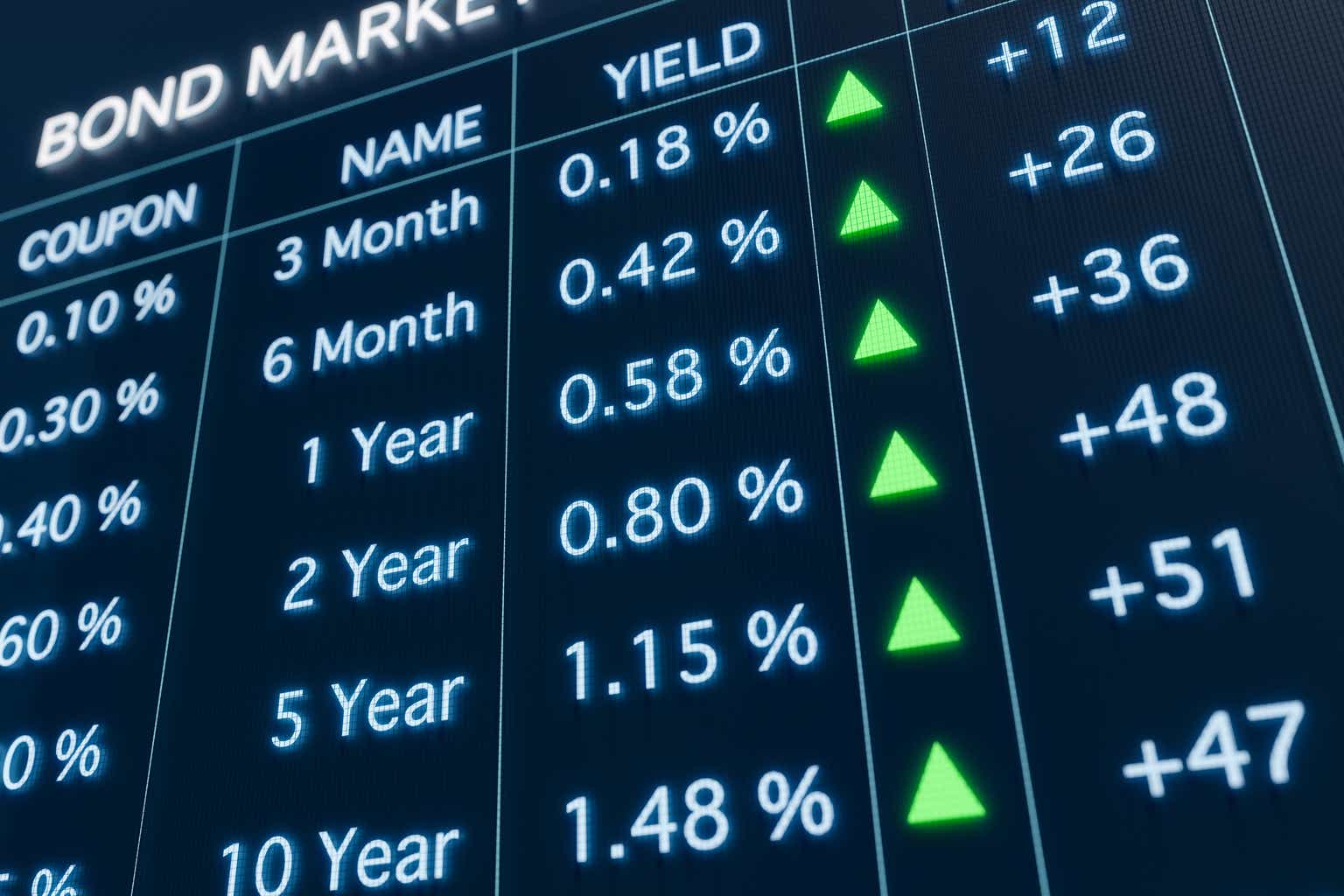Investment Thesis
Investment-grade bonds present an attractive opportunity in the current economic climate, with declining inflation and lower growth expectations. Real yields are positive across the yield curve, making fixed-income investments, especially investment-grade securities, appealing in the current environment. The recent underperformance of investment-grade bonds compared to equities suggests favorable valuations and a potential trade opportunity. I personally believe that investment-grade corporate bonds will outperform stocks over the next couple of months, hence the reason behind my pair trading strategy. This strategy has historically performed well during times of financial stress and it is suitable for investors anticipating slower economic growth and seeking risk-off portfolio positioning, but it’s important to consider that it may underperform if the economy reaccelerates.
About IGIB
The iShares 5-10 Year Investment Grade Corporate Bond ETF (NASDAQ:IGIB) is a compelling option for investors seeking exposure to the investment-grade corporate bond market. With its strategy focused on capturing the returns of investment-grade bonds with maturities ranging from 5 to 10 years, IGIB offers a balanced approach to fixed-income investing.
IGIB’s portfolio comprises a diverse range of high-quality corporate bonds. The fund’s holdings undergo rigorous credit analysis to ensure they meet the investment-grade criteria, emphasizing stability and reduced default risk. The fund’s strategy aligns well with investors looking to achieve a balance between income generation and capital preservation. Investment-grade corporate bonds typically provide a reliable stream of income through their regular coupon payments, while their higher credit quality offers a degree of stability during market downturns.
iShares
Additionally, IGIB’s intermediate-term maturity profile positions it strategically in the yield curve, striking a balance between generating income and managing interest rate risk. The fund’s 5-10 year duration allows investors to capture attractive yields while maintaining a reasonable level of sensitivity to changes in interest rates.
For more details on IGIB, please check the fund’s prospectus.
IGIB: A Pair Trading Strategy With SPY
I consider investment-grade bonds to be an attractive asset class given the current economic conditions. With inflation decelerating and lower economic growth ahead of us, both short-term and long-term inflation expectations have declined significantly. Bonds have reached a bottom without experiencing a substantial rally since late 2022, creating an opportunity for bulls at the moment.
Bloomberg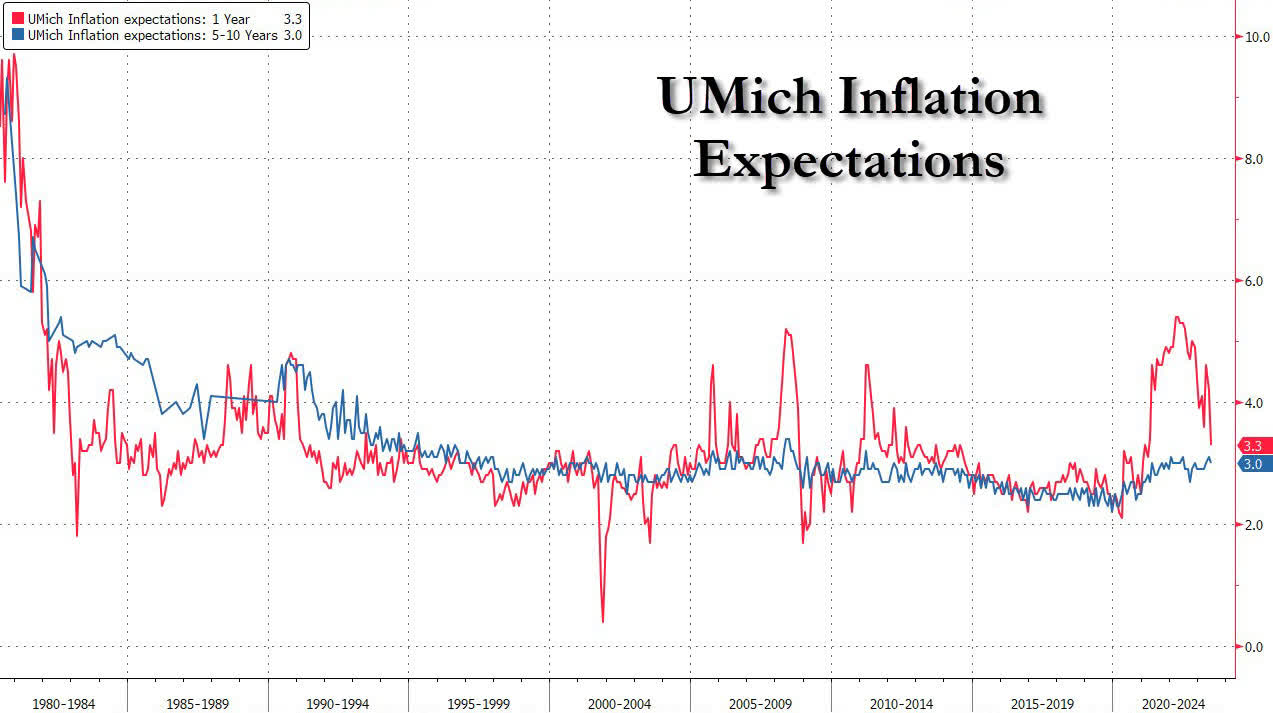
Positive real yields across the yield curve present an appealing opportunity to invest in fixed-income instruments, particularly investment-grade securities. The 10-year real yield has returned to levels seen during the regional banking crisis, prompting me to question the sustainability of the economy and equity markets at such high levels. Similar levels of real yields in the past, such as in late 2007-early 2008 during the Global Financial Crisis, had negative impacts on the markets, and I don’t think this time is any different.
CNBC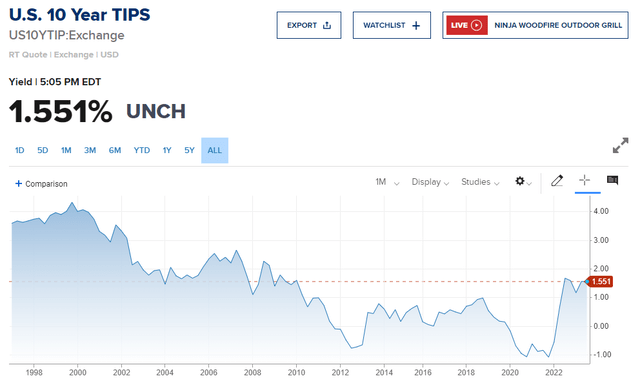
The chart below illustrates the underwhelming returns of IGIB during the recent market pullback compared to equities, which have recovered a larger portion of their losses. Considering that equities are overpriced amidst expectations of slower economic growth, investment-grade corporate bonds appear to have found a support level and offer more favorable valuations. This leads me to believe that a profitable trade opportunity may arise by shorting the S&P 500 and buying IGIB.
Refinitiv Eikon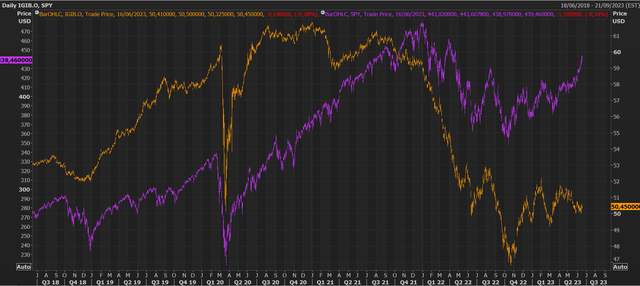
This strategy has historically performed well during periods of increased financial stress, including March 2020, late 2018-early 2019, and the Global Financial Crisis. The relative returns of this strategy during those periods are displayed in the charts below.
Refinitiv Eikon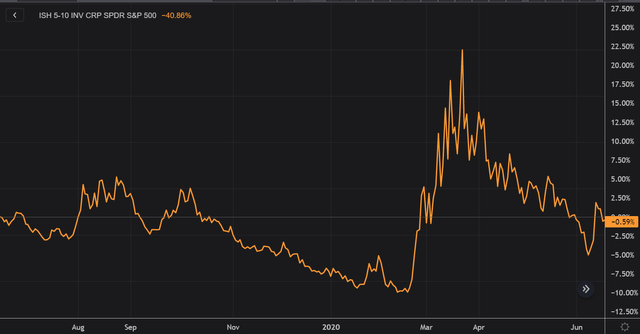
Refinitiv Eikon
Refinitiv Eikon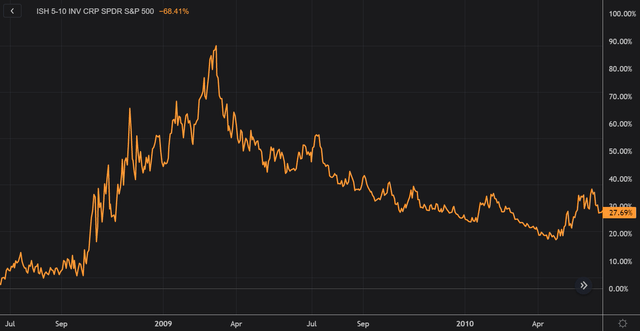
Moreover, the current economic landscape underscores the importance of capital preservation. While equities may offer the potential for higher returns, they also come with increased volatility. Investment-grade bonds, on the other hand, have historically exhibited less volatility, allowing investors to better weather market drawdowns and protect their capital.
I also believe that the high-interest-rate environment we’re living through further strengthens the case quality bonds. With central banks around the world hiking at the fastest pace in decades, there is a debate about how far can they go from here. I personally think that we’re now very close to peak rates and as the economy slows down, rates will also go lower, resulting in capital appreciation for bondholders.
All in all, I believe this strategy is suitable for investors anticipating lower economic growth and seeking to position their portfolios in a risk-off environment. However, it’s important to acknowledge that this strategy may underperform if the economy reaccelerates, as equities tend to outperform corporate bonds in that scenario.
Key Takeaways
With inflation on the decline and lower growth expectations, the current economic climate presents an attractive opportunity for investment-grade bonds. Across the yield curve, real yields are positive, adding to the appeal of fixed-income investments. The recent underperformance of investment-grade bonds compared to equities indicates favorable valuations. From my perspective, I think that investment-grade corporate bonds will outperform stocks over the next few months, which is the driving force behind my pair trading strategy. This strategy has a history of success during periods of financial stress, making it suitable for investors anticipating slower economic growth and desiring risk-off portfolio positioning. However, it is important to acknowledge that this strategy may experience underperformance if the economy reaccelerates.
Read the full article here


